April 5th was a gorgeous day in a series of gorgeous spring days so I was a little reluctant to spend the last daylight hours of it underground in the basement of the CAM. When at 6:30 p.m, Debra Barrera treated us to a musical sampling of her itunes library instead of launching into her lecture, I got pissy. After Hall and Oates' "Kiss on My List" and New Order's "Ceremony," I aurally checked out and daydreamed about the sun in my eyes. I don't blame her for the late start or criticize her for her DJ-ing as long as she doesn't hold my Best Buy attire (blue polo shirt and khaki slacks) against me. I'm no dresser and her DJ-ing could assuage my time anxiety due to severe over-scheduling (mine not hers).
Barrera, who's virtually ubiquitous in the Houston art scene, went first. If you don't know her or of her, you should. She works for McMurtrey Gallery, blogs about the local are scene, and is a contributing writer at Arts + Culture Magazine. All of which you can read about on her website, http://debrabarrera.com.
Barrera structured her talk chronologically. She studied painting but found refuge in sculpture. First there were works with words. Not words about the works, but works made of them.
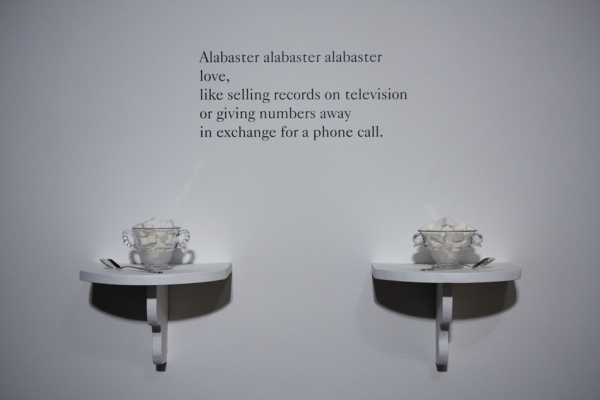 |
| I Like the Beach Boys Too |
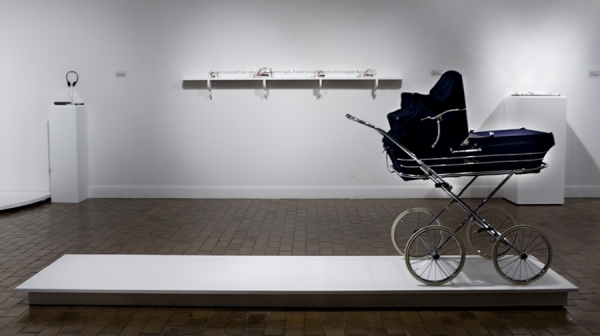 |
Someday Looks So Good Right Now
pram, birthday candles, wood
|
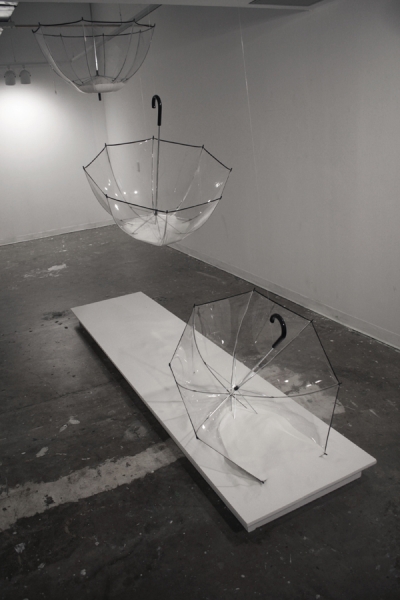 |
You've Still Got Time for Your
Greatest Hits
plastic umbrellas, sugar, wood, twine
|
She characterizes this phase in her artistic development as ornate treatment of mundane objects. The most obvious example of this is her recasting of celery stalks and hot dog holders.
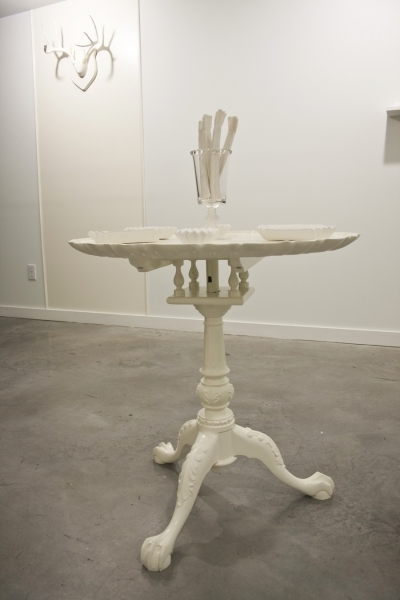 |
There's a Place for Everything
ceramic, wood, paper, glass
|
Then she shifted to these intensely detailed shop windows drawings. They are surreal in their subject matter and labyrinthine in their detail from the eyelashes of the cows to the shoe laces of the Converse All-Stars.
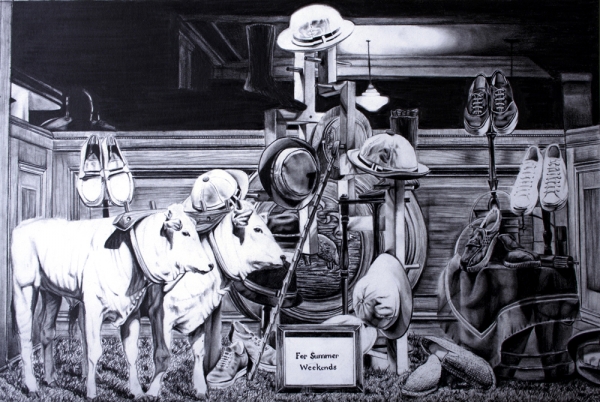 |
For Summer Weekends
Graphite on Paper, 9 x 13 in
|
to the photographs of object found in cars in wrecked cars in local junkyards.
The works, which are still in progress, give me a sense of Barrera's aesthetic sense maturing around this childhood obsession with cars. From the painstakingly detailed drawings to the sculptural sensibilities in the photos of the found objects, Barrera's work works. It will be interesting to see which road she takes with her next series.
The second artist of the night was photographer Kirsty Peet. She opened by stating that she strives for an emotive quality in her photography. Not necessarily raw emotion but something slightly removed. To quote her, the intent of her work is "not feeling but thinking about feeling."
Her works do possess that sense that they are about something but not necessarily the image or how it was captured. Don't get me wrong. Her photographic skill is first rate but as she stressed in discussing her own exhibitions, she's creating groupings of photographs that are to be understood,experienced, and interpreted within the context her intentionally constructed patterned grids.
Her Uncertain series re-enforces this thinking about feeling approach with very clean, spare contemplative pictures of the quotidian: a shower drain, hair, chewed gum, an empty parking spot. Never have I marveled at the beauty of an unmade bed or
a piece of ABC (already been chewed) gum.
Next in her progression is her Coming of Age series. This set of works deals maturity. Specifically for her, when is a person no longer considered an child. This question arises out of her ethno-cultural heritage. Namely that while Caucasians (a.k.a. White America) may have a strangle hold on Republican party, they don't have any coming of age rituals such as a bar mitzvah or a quincenera. People are left to their own devices. They try to invent rites of passage rituals such as a pet dying or
shaving for the first time or
succumbing to your first internet scam...or your eleventy-ith.
I like the way in which Peet creates her own iconic images around the theme of maturity. They are culturally identifiable but also bordering on the abstract, so clean and polished as to be ideals of what they symbolize.
Her latest series of work, How I Will Die, is on display with works by Britt Ragsdale at Gallery 1724 through May 31, 2012. According to her, these works explore her hypochondria, but for me they simply, quietly emphasize her (and our or at least particularly mine because I can't really be worrying about yours) mortality.
In using herself as subject, these photographs straddle the line between performance art artifacts and art photography.
Peet cites the photographer Chema Madoz as an influence. I can see similarities in their technique and framing of the objects they shoot. Both isolate and monumentalize their subjects. However, where Madoz veers toward the humorous or ironic, Peet steers toward the contemplative and introspective, more so in the works that feature her own body. A morbid sense of humor underlies this series giving you the sense she's saying "Hey, I'm dying here (haha)...no, seriously, I AM DYING HERE."
I for one look forward to seeing more of her work before one of her hypochondriac self-diagnosis proves correct, which will hopefully not be for another 70 years.


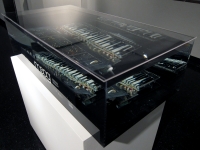

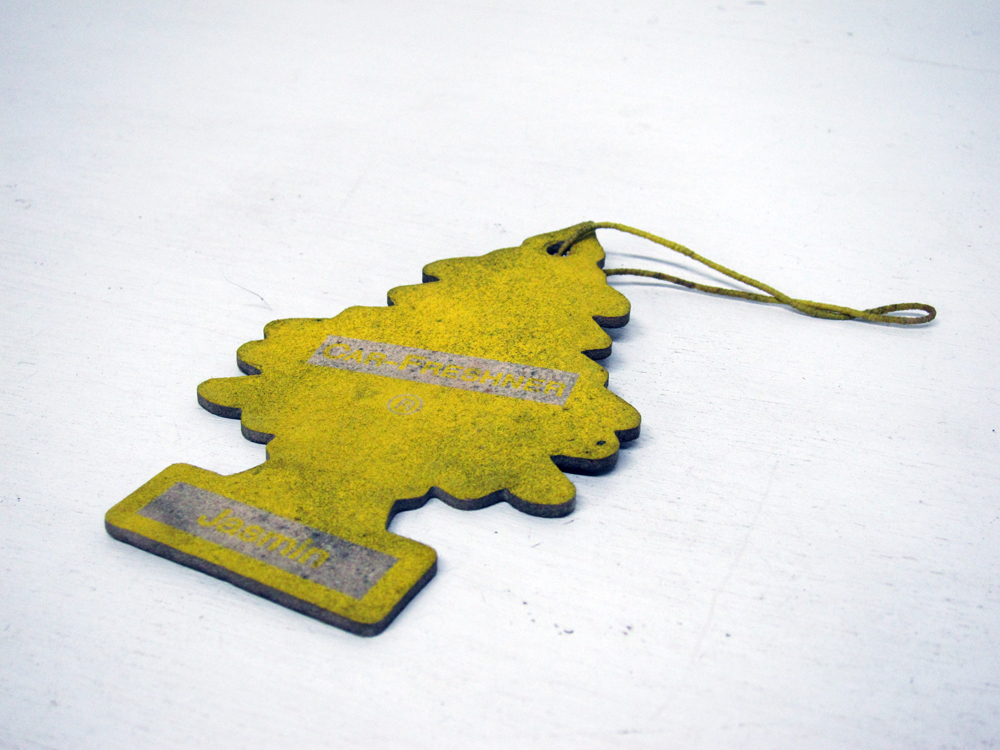











No comments:
Post a Comment